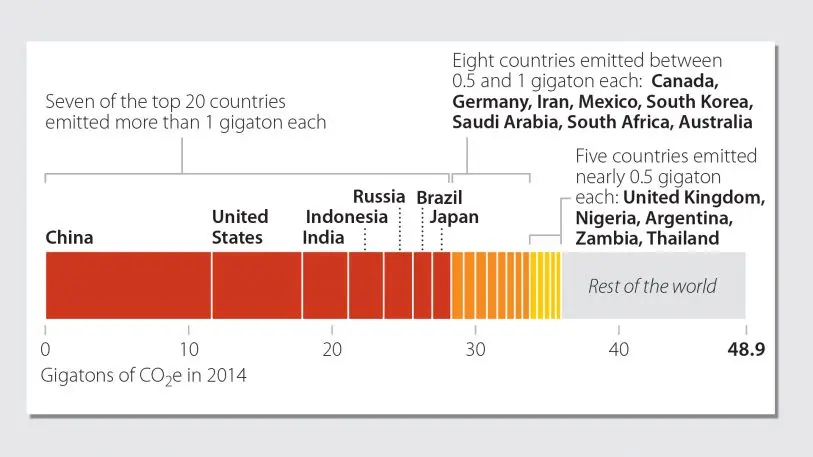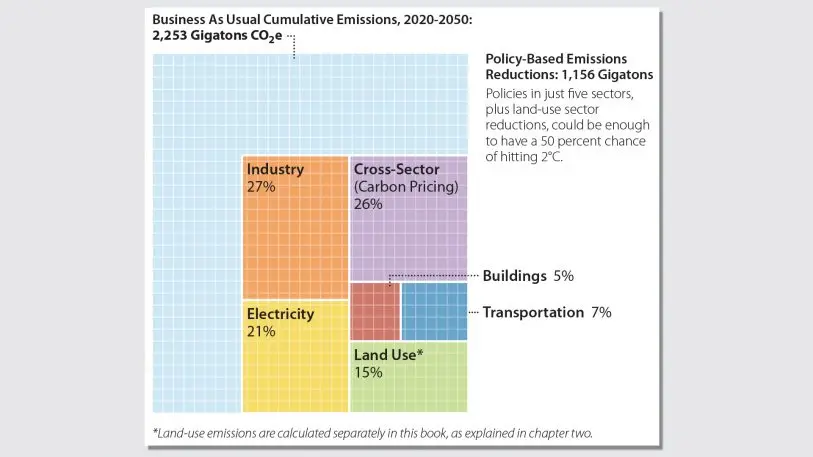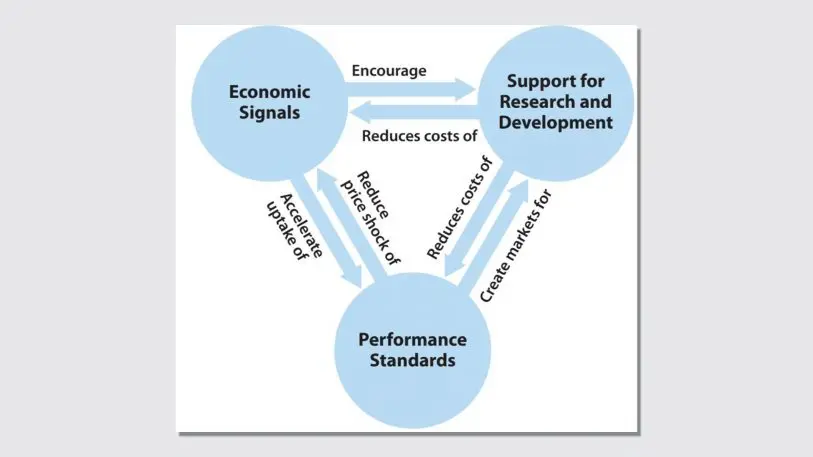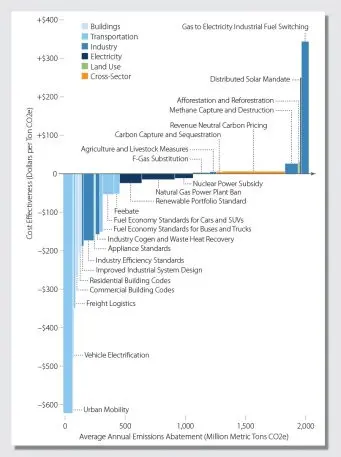The world has a tiny window of time to change course to avoid the worst-case scenario of climate change in the future–from global food shortages and catastrophic fires and floods to mass deaths from extreme temperatures. The good news: We have the technology we need to tackle the problem. The next step is to roll out the right policy to implement that technology. A new book, Designing Climate Solutions: A Policy Guide for Low-Carbon Energy, explains how to do it.
“It’s all solvable if you do the right thing, and do it promptly,” says author Hal Harvey, CEO of the energy and environmental policy firm Energy Innovation. He created the book for policymakers after seeing a need for a good guide about how to create targeted, well-designed climate policy. “It’s such a huge part of many of our issues, and yet, we sort of stumble around with this idea and that idea without systematically collecting data on what works and compiling that into a clear strategy.” Here are a few key points from the book.

Target The Biggest Emitters
A small group of countries–led by China, the U.S., India, and Indonesia–emit 75% of global emissions. Because of their outsize impact, these countries are the key places to focus new climate policy. The 20 largest emitters all made pledges under the Paris climate agreement, though all of the top emitters need stronger policy (and the U.S., of course, plans to pull out of the agreement, making state and local policy even more important).

Target The Important Areas First
Within each country, policy needs to target six key areas. “We’re all about triage: Do the important things first and do them hard,” says Harvey. Building codes and other policy can make buildings more efficient. Renewable electricity has already fallen in price so much that it is growing quickly, but policies like renewable portfolio standards, which set targets for utilities to procure a certain amount of clean energy, can push faster adoption.
Policy can also drive down emissions in industry–in industrial agriculture, for example, governments can incentivize farmers to use anaerobic digesters to turn cow manure into electricity instead of emitting methane, a potent greenhouse gas. In transportation, policy can support charging stations for electric cars, force automakers to design more efficient cars, and make neighborhoods more walkable and bikeable. In countries where changing land use is a major source of emissions (such as Brazil, where deforestation in the Amazon is on the rise), policy can protect forests. A price on carbon can help cut emissions across sectors. Support for R&D can also help technology continue to improve and drop in price.

Make Smart Policy
Some economists suggest that a carbon tax that forces polluters to pay for their emissions, or a cap-and-trade policy, is a panacea. But carbon pricing alone isn’t enough. In parts of the market that aren’t sensitive to price, a carbon tax won’t help–for example, when tenants pay the electric bill in a building, landlords don’t have an incentive to buy the most efficient appliances for those apartments. The book carefully lays out a mix of the best policies that are designed to reinforce each other. To improve something like air conditioners, we need standards for appliances that call for a certain level of efficiency.
Policy also needs to be designed well. Good policy, the book explains, uses several principles. One example is the idea of built-in continuous improvement. Without it, a policy can eventually flop. The fuel economy standards introduced in the U.S. in 1970s had a target of 27.5 miles per gallon by 1985. After 1985, the standard didn’t rise again until 2011. “The consequence of that is we sent over a trillion dollars to countries that hate us,” says Harvey. “If Gerald Ford had used continuous improvement–one of our core principles–saying we’re going to increase fuel efficiency by 4% a year instead of setting an end date, we would have saved all that money, and prevented all that carbon dioxide, and that national security problem.”

The price of a clean energy future is about the same as a carbon-intensive future, Harvey says, even without counting environmental benefits. The book also details the cost-effectiveness of the key policies it recommends. Many ultimately save money–fuel economy standards for cars, for example, save consumers money at gas pumps. Cities that are designed for walking and biking and have good public transit save money by cutting traffic and pollution and health costs. The challenge of addressing climate change “isn’t technical, nor even economic but rather is a matter of enacting the right policies and ensuring they are properly designed and enforced,” Harvey writes.
Recognize your company's culture of innovation by applying to this year's Best Workplaces for Innovators Awards before the extended deadline, April 12.
